Jean-François Heisser, Marc Coppey - Théodore Dubois: Cello and Orchestra & Piano and Orchestra Works (2011) CD-Rip
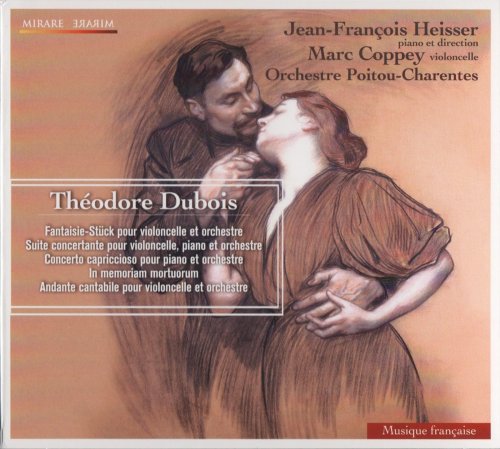
Artist: Jean-François Heisser, Marc Coppey
Title: Théodore Dubois: Cello and Orchestra & Piano and Orchestra Works
Year Of Release: 2011
Label: Mirare
Genre: Classical
Quality: FLAC (image+.cue,log,scans)
Total Time: 62:45
Total Size: 353 mb
WebSite: Album Preview
Tracklist: Title: Théodore Dubois: Cello and Orchestra & Piano and Orchestra Works
Year Of Release: 2011
Label: Mirare
Genre: Classical
Quality: FLAC (image+.cue,log,scans)
Total Time: 62:45
Total Size: 353 mb
WebSite: Album Preview
Théodore Dubois (1837-1924)
01. Fantasie-Stück, for cello & orchestra- Allegro moderato, avec franchise [0:06:27.31]
02. Fantasie-Stück, for cello & orchestra- Andante, très calme [0:03:53.61]
03. Fantasie-Stück, for cello & orchestra- Allegro vivo, mouvement de saltarelle [0:03:19.35]
04. Suite concertante, for cello, piano & orchestra- Maestoso, sans lenteur [0:08:48.39]
05. Suite concertante, for cello, piano & orchestra- Allegretto leggiero [0:03:13.12]
06. Suite concertante, for cello, piano & orchestra- Larghetto [0:06:04.71]
07. Suite concertante, for cello, piano & orchestra- Allegro [0:05:44.70]
08. Concerto capriccioso, for piano & orchestra- Andante come recitativo [0:02:20.17]
09. Concerto capriccioso, for piano & orchestra- Allegro [0:06:37.23]
10. Concerto capriccioso, for piano & orchestra- Adagio con fantasia [0:01:58.04]
11. Concerto capriccioso, for piano & orchestra- Allegro [0:04:30.51]
12. In memoriam mortuorum, chant élégiaque for orchestra [0:05:24.18]
13. Andante cantabile, for cello & piano [0:04:20.08]
Performers:
Jean-François Heisser - piano and direction
Marc Coppey - cello
Orchestre Poitou-Charentes
Music history can be inexplicably cruel. Why a composer like Camille Saint-Saëns manages to avoid history’s dustbin while Théodore Dubois (1837–1924) is relegated to it is something I cannot comprehend. And that is not at all meant as a knock on Saint-Saëns, whose music I enjoy and who certainly does not deserve being in that dustbin. Rather it is to raise the question of how a composer of the quality of Dubois can be almost completely forgotten by today’s musicians and music world.
In Fanfare 34:1 I reviewed an Atma recording featuring two Masses by Dubois, and I was extremely positive. About this disc, I am even more so. I raise the comparison with Saint-Saëns not by accident. The two are almost exact contemporaries (Saint-Saëns’s dates are 1833–1921), and the music is very similar, not only in style but in quality.
Dubois studied at the Paris Conservatory as a pianist and composer, and traveled to Italy where he won a Premier Grand Prix de Rome in 1861. He returned to Paris and was engaged as a professor at the Conservatory in 1871. He eventually became director of the Conservatory from 1896 to 1905. He was also an organist who succeeded Saint-Saëns at the Church of the Madeleine and he wrote a significant amount of church music for choir and for organ. He was an extremely conservative musician and teacher and the author of a treatise on harmony that resisted much of what was happening in music at the turn of the century. That conservatism, along with his apparently rather austere and forbidding personality, may have isolated him from some musical circles, which in turn may have increased his chances for obscurity. We, however, are in a different time, and recordings give us an opportunity to re-examine history’s judgments. This disc affirms that Dubois deserves our attention.
The Fantaisiestück for cello and orchestra (mislabeled in the notes as being for cello and piano) is attractive from its opening bar, which grabs the listener with a catchy melody. These three pieces really form a 13-minute concerto, with their fast-slow-fast pattern. Dubois exploits the virtuoso possibilities of the instrument, while at the same time showing a high level of thematic inventiveness. It is, in fact, Dubois’ consistent level of melodic inspiration that strikes one over and over again in his music. The middle movement of this work is actually based on a slowed-down version of the opening bravura theme of the first movement, which adds an underlying unity to the music.
The Concerto Capriccioso is a 14-minute lighthearted piano concerto that may be the strongest reminder of Saint-Saëns on this disc. Dubois wrote it in 1876, and the composer may not have fully mastered the orchestra at this stage of his career, but he certainly knew how to write for the keyboard. The orchestral accompaniment is rather basic and simplistic, though in no way embarrassing. But the sparkle, charm, and virtuosity of the piano writing are absolutely captivating.
The Suite Concertante is scored for cello and piano solos with orchestra, and is the major work on the disc. At 23 minutes it never wears out its welcome. Dubois seems always to be concise in his structure, and to value brevity. The work is rather late in his output—1912–13, after his retirement from the Conservatory. He had begun to study and appreciate Wagner, and the harmonic language is a bit more complex here than in the earlier works. The notes quote the composer’s comments on this piece: “I’d like it to be a sort of concerto for three protagonists, but from which all virtuosity, in the strict sense of the word, is banished. I’d like its predominant characteristic to be musicality! Will I succeed?” In my view, he certainly did, and he created a most unusual work that reflects the influences of German postromanticism while never losing its basically Gallic character. The word charm keeps coming back over and over again as I listen to Dubois’ music. Charm is a quality that one doesn’t speak of in “serious” music too often, but in fact it is a quality that makes life more pleasant, and a musical quality very welcome when one encounters it, whether in Haydn or in Dubois. The second movement of this suite, Allegretto leggiero, practically defines the term. This suite might seem difficult for an orchestra to program, requiring a cello and piano soloist, but in fact could be played by the principals of many orchestras. The work was not premiered until 1921, and Dubois’ comments after the performance indicate his feelings about the world of music at that time: “It was a great success. I am pleased with the interpretation and also with the way the audience received a work so out of tune with the current tendencies of a section of the young generation.”
The two other works on the disc are very short. In memoriam mortuorum is a piece for chamber orchestra written as a tribute to the victims of World War I, and its mostly tender and comforting atmosphere is appropriately interrupted by an intense, even angry outburst in the middle. The Andante Cantabile for cello and orchestra is compared by Alexandre Dratwicki in his very informative and thorough notes to one of Saint-Saëns’s most famous pieces, “The Swan” from Carnival of the Animals . It is indeed similar in mood, duration, and in its beauty, and it is a fitting close to a wonderful disc.
The performances seem very good, although of course one has nothing with which to compare them. Still, the soloists cope with the technical challenges Dubois gives them and play the music with real involvement. The orchestra is on the small size (a string complement of 8-6-6-6-4); it feels appropriate for the music most of the time, though there are a few moments at which one might want a bit more tonal weight. The sound is warm, well blended, and perfectly balanced. Anyone who enjoys exploring the side roads of the Romantic era should snap this up. It is a candidate for my year-end Want List. --Henry Fogel
In Fanfare 34:1 I reviewed an Atma recording featuring two Masses by Dubois, and I was extremely positive. About this disc, I am even more so. I raise the comparison with Saint-Saëns not by accident. The two are almost exact contemporaries (Saint-Saëns’s dates are 1833–1921), and the music is very similar, not only in style but in quality.
Dubois studied at the Paris Conservatory as a pianist and composer, and traveled to Italy where he won a Premier Grand Prix de Rome in 1861. He returned to Paris and was engaged as a professor at the Conservatory in 1871. He eventually became director of the Conservatory from 1896 to 1905. He was also an organist who succeeded Saint-Saëns at the Church of the Madeleine and he wrote a significant amount of church music for choir and for organ. He was an extremely conservative musician and teacher and the author of a treatise on harmony that resisted much of what was happening in music at the turn of the century. That conservatism, along with his apparently rather austere and forbidding personality, may have isolated him from some musical circles, which in turn may have increased his chances for obscurity. We, however, are in a different time, and recordings give us an opportunity to re-examine history’s judgments. This disc affirms that Dubois deserves our attention.
The Fantaisiestück for cello and orchestra (mislabeled in the notes as being for cello and piano) is attractive from its opening bar, which grabs the listener with a catchy melody. These three pieces really form a 13-minute concerto, with their fast-slow-fast pattern. Dubois exploits the virtuoso possibilities of the instrument, while at the same time showing a high level of thematic inventiveness. It is, in fact, Dubois’ consistent level of melodic inspiration that strikes one over and over again in his music. The middle movement of this work is actually based on a slowed-down version of the opening bravura theme of the first movement, which adds an underlying unity to the music.
The Concerto Capriccioso is a 14-minute lighthearted piano concerto that may be the strongest reminder of Saint-Saëns on this disc. Dubois wrote it in 1876, and the composer may not have fully mastered the orchestra at this stage of his career, but he certainly knew how to write for the keyboard. The orchestral accompaniment is rather basic and simplistic, though in no way embarrassing. But the sparkle, charm, and virtuosity of the piano writing are absolutely captivating.
The Suite Concertante is scored for cello and piano solos with orchestra, and is the major work on the disc. At 23 minutes it never wears out its welcome. Dubois seems always to be concise in his structure, and to value brevity. The work is rather late in his output—1912–13, after his retirement from the Conservatory. He had begun to study and appreciate Wagner, and the harmonic language is a bit more complex here than in the earlier works. The notes quote the composer’s comments on this piece: “I’d like it to be a sort of concerto for three protagonists, but from which all virtuosity, in the strict sense of the word, is banished. I’d like its predominant characteristic to be musicality! Will I succeed?” In my view, he certainly did, and he created a most unusual work that reflects the influences of German postromanticism while never losing its basically Gallic character. The word charm keeps coming back over and over again as I listen to Dubois’ music. Charm is a quality that one doesn’t speak of in “serious” music too often, but in fact it is a quality that makes life more pleasant, and a musical quality very welcome when one encounters it, whether in Haydn or in Dubois. The second movement of this suite, Allegretto leggiero, practically defines the term. This suite might seem difficult for an orchestra to program, requiring a cello and piano soloist, but in fact could be played by the principals of many orchestras. The work was not premiered until 1921, and Dubois’ comments after the performance indicate his feelings about the world of music at that time: “It was a great success. I am pleased with the interpretation and also with the way the audience received a work so out of tune with the current tendencies of a section of the young generation.”
The two other works on the disc are very short. In memoriam mortuorum is a piece for chamber orchestra written as a tribute to the victims of World War I, and its mostly tender and comforting atmosphere is appropriately interrupted by an intense, even angry outburst in the middle. The Andante Cantabile for cello and orchestra is compared by Alexandre Dratwicki in his very informative and thorough notes to one of Saint-Saëns’s most famous pieces, “The Swan” from Carnival of the Animals . It is indeed similar in mood, duration, and in its beauty, and it is a fitting close to a wonderful disc.
The performances seem very good, although of course one has nothing with which to compare them. Still, the soloists cope with the technical challenges Dubois gives them and play the music with real involvement. The orchestra is on the small size (a string complement of 8-6-6-6-4); it feels appropriate for the music most of the time, though there are a few moments at which one might want a bit more tonal weight. The sound is warm, well blended, and perfectly balanced. Anyone who enjoys exploring the side roads of the Romantic era should snap this up. It is a candidate for my year-end Want List. --Henry Fogel
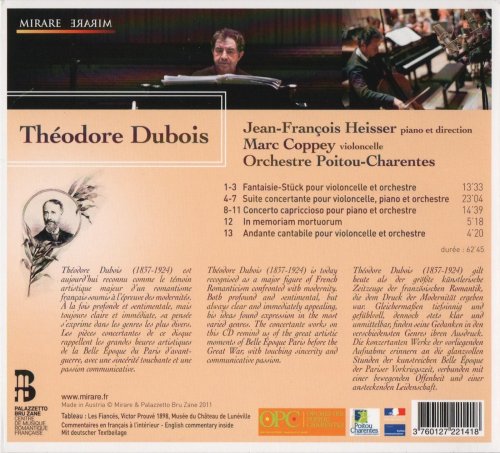

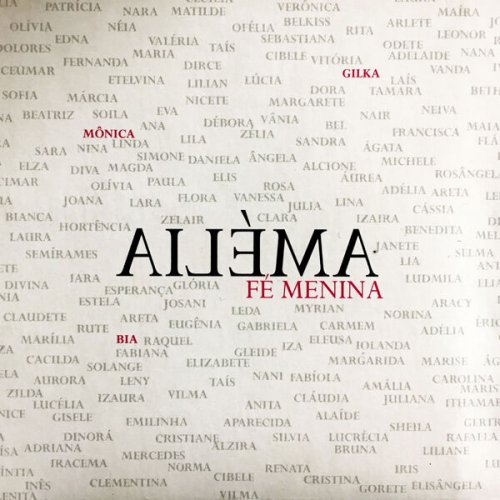
![Grises - Eveil (2025) [Hi-Res] Grises - Eveil (2025) [Hi-Res]](https://www.dibpic.com/uploads/posts/2025-12/1766127968_cover.jpg)
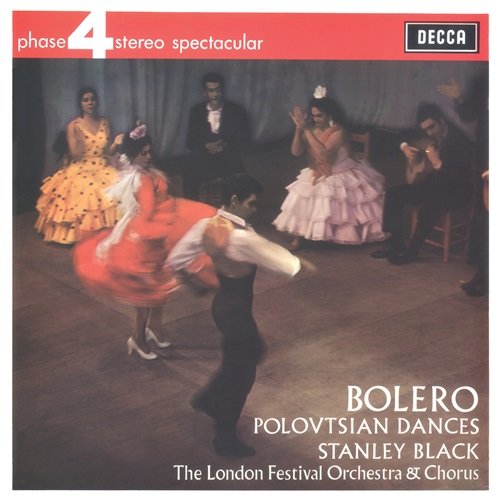
![Nana Vasconcelos - Saudades (1980/2025) [Hi-Res] Nana Vasconcelos - Saudades (1980/2025) [Hi-Res]](https://www.dibpic.com/uploads/posts/2025-12/1766056483_cover.jpg)
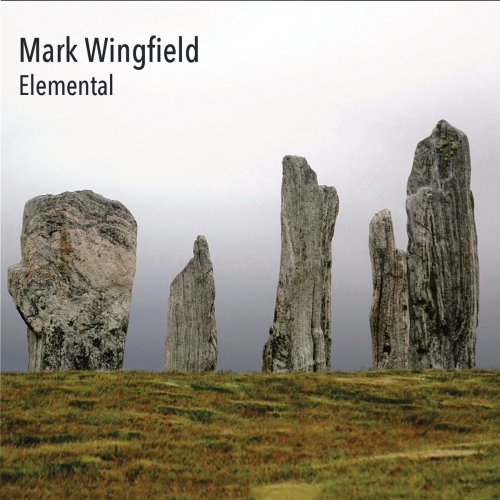
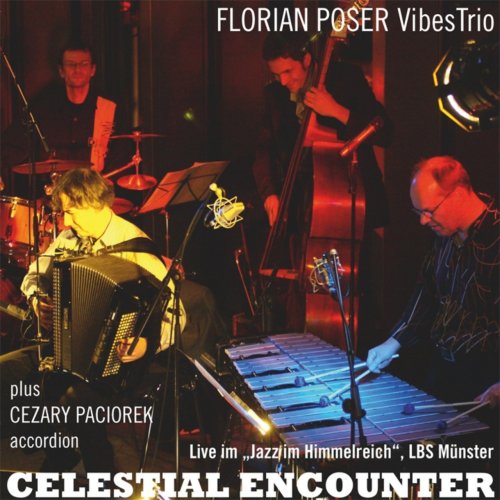
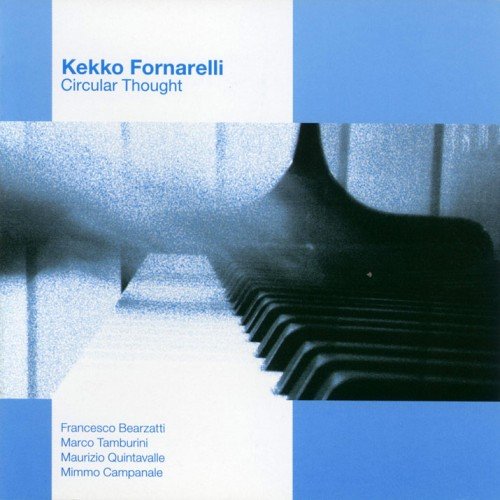
![The Baroque Jazz Ensemble - The Baroque Jazz Ensemble (feat. Ira Schulman) (2025) [Hi-Res] The Baroque Jazz Ensemble - The Baroque Jazz Ensemble (feat. Ira Schulman) (2025) [Hi-Res]](https://img.israbox.com/img/2025-12/19/yehoqbmzkuwk180c26lz85clx.jpg)